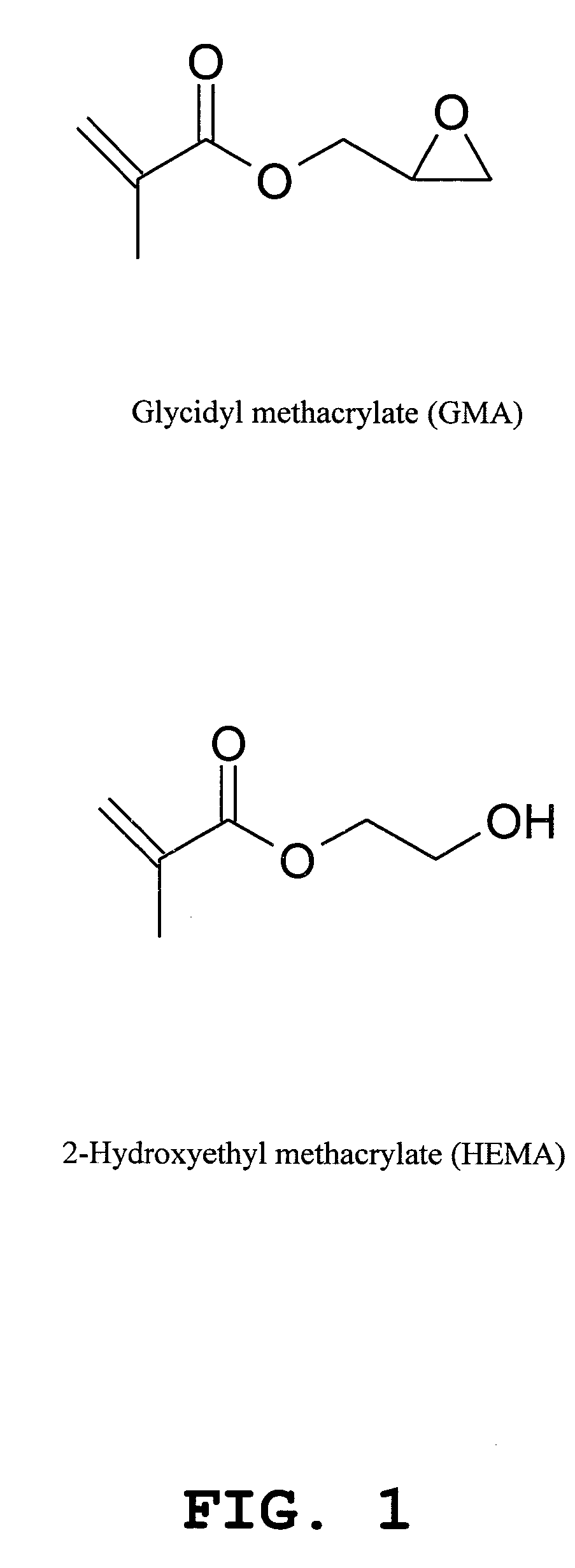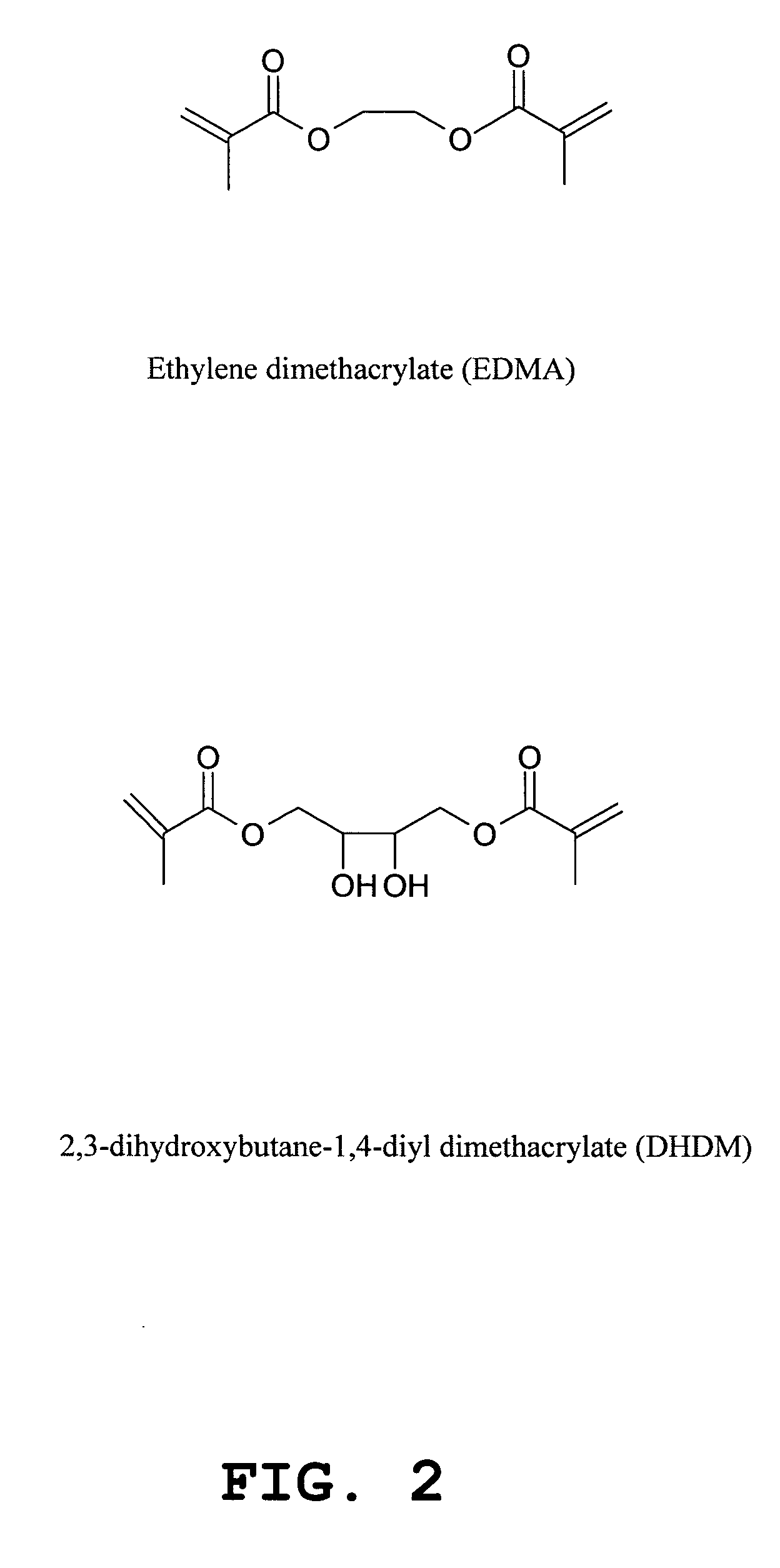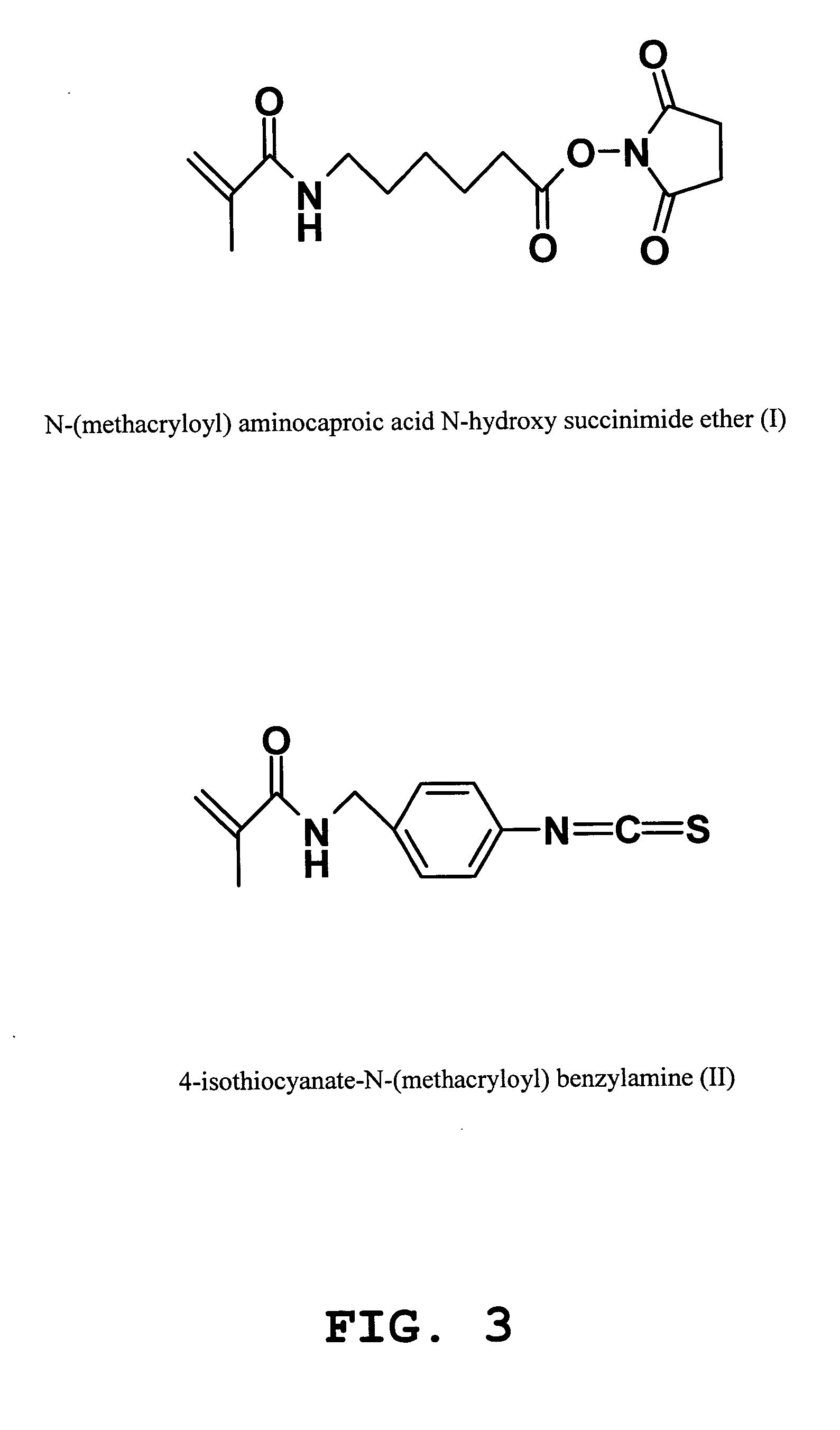Method for fabrication of biochips with a macroporous polymer substrate
- Summary
- Abstract
- Description
- Claims
- Application Information
AI Technical Summary
Benefits of technology
Problems solved by technology
Method used
Image
Examples
example 1
Synthesis of (I)
a) Synthesis of N-Methacryloyl-6-aminocaproic acid
6-Aminocaproic acid (50 mmol, 6.56 g) was dissolved in 75 ml of glacial acetic acid, and methacrylic anhydride (55 mmol, 8.2 ml) was dropped into this solution. The reaction mixture was stirred under the room temperature during 48 hours and then evaporated in vacuo. The product obtained was purified by chromatography on silica gel column (4×30 cm) using chloroform-acetone (10:2) mixture as a mobile phase. The collected fractions were evaporated to dryness to obtain compound N-Methacryloyl-6-aminocaproic acid at a yield of 88%.
C10H17NO3 MS: calc. 199.4, found 200.5.
b) Synthesis of (I) from N-methacryloyl-6-aminocaproic acid
N-Methacryloyl-6-aminocaproic acid (24.6 mmol, 4.9 g) was dissolved in 80 ml of acetone. After that N,N-dicyclohexylcarbodiimide (27.0 mmol, 5.57 g) and N-hydroxysuccinimide (27.0 mmol, 3.1 g) were added to the solution. The reaction mixture was stirred at room temperature overnight. The form...
example 2
Synthesis of (II)
a) Synthesis of 4-Amino-N-methacryloylbenzylamine
The solution of methacrylic anhydride (33.0 mmol, 4.9 ml) in 10 ml of tetrahydrofuran was slowly dropped under continuous stirring to the solution of 4-aminobenzylamine (30.0 mmol, 3.66 g) and triethylamine (30.0 mmol, 4.16 mg) in 25 ml of 2-propanol. The reaction was allowed to proceed at room temperature for two hours. After evaporation in vacuo, the oil residue was dissolved in 25 ml of chloroform and washed sequentially with saturated aqueous solution of NaHCO3 (2×15 ml), water (2×15 ml), dried over Na2SO4, filtered and evaporated. The product obtained was purified by chromatography on silica gel column (2.5×20 cm) using mixture of chloroform-methanol (15:1) as a mobile phase. Collected fractions were concentrated to dryness to obtain 4-Amino-N-methacryloylbenzylamine with yield 67%. C11H14N2O MS: calc. 190.9, found 191.9 λ max 240.8 nm (EtOH).
b) Synthesis of (II) from 4-Amino-N-methacryloylbenzylamine
The so...
example 3
Synthesis of (III)
III was synthesized according to the procedure described in U.S. Pat. No. 6,458,584.
PUM
| Property | Measurement | Unit |
|---|---|---|
| Fraction | aaaaa | aaaaa |
| Fraction | aaaaa | aaaaa |
| Fraction | aaaaa | aaaaa |
Abstract
Description
Claims
Application Information
 Login to View More
Login to View More - R&D
- Intellectual Property
- Life Sciences
- Materials
- Tech Scout
- Unparalleled Data Quality
- Higher Quality Content
- 60% Fewer Hallucinations
Browse by: Latest US Patents, China's latest patents, Technical Efficacy Thesaurus, Application Domain, Technology Topic, Popular Technical Reports.
© 2025 PatSnap. All rights reserved.Legal|Privacy policy|Modern Slavery Act Transparency Statement|Sitemap|About US| Contact US: help@patsnap.com



